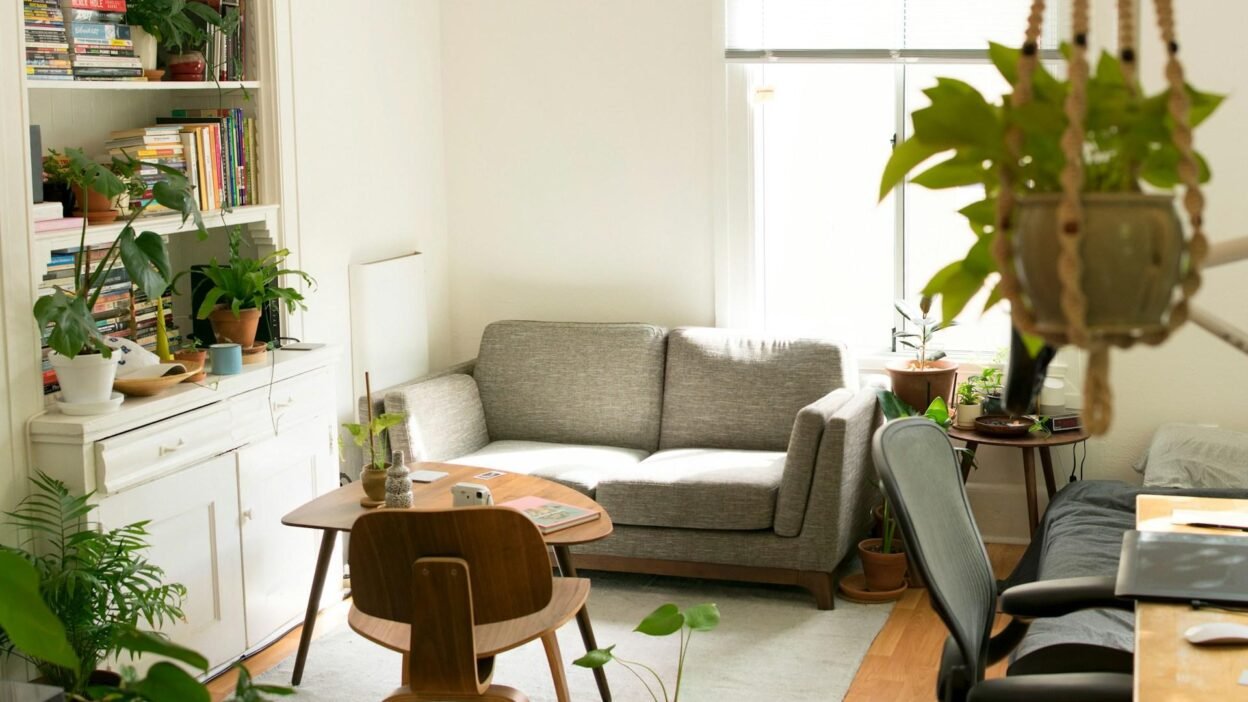Ever walk into someone else’s house and instantly feel better—like your stress just fell off at the door? It’s not magic. It’s design. And as we’ve all spent more time inside over the past few years, many of us have started noticing that our homes don’t just house us—they shape us.
From the rise of remote work to the ongoing wellness boom, there’s been a massive shift in how we think about personal space. A living room isn’t just for Netflix anymore. It’s your office, your gym, and maybe your kid’s classroom, too. Mood isn’t just something you carry; it’s something your home reflects. And lately, more people are asking: How can my home make me feel better—calmer, lighter, even happier?
Louisiana, in particular, has seen a home improvement spike. It’s a state where people are rebuilding and reimagining. Between hurricanes and humidity, comfort isn’t just about trend—it’s about necessity. Homes need to function and feel good. So how do you create a space that actually lifts your spirits?
In this blog, we will share real home features that do more than just look nice—they actively improve your mood, reduce stress, and make home feel like the best place to be.
Turn Everyday Tasks Into Mini Escapes
Start with your bathroom. It’s the one place you’re guaranteed to be alone for five minutes (hopefully). Turning it into a mini spa isn’t indulgent—it’s smart. A deep soak in a well-designed tub can lower cortisol, ease anxiety, and help you sleep. And if you’re in the South, where long days and hot weather can wear you down, cool evening baths can feel like a reset button.
That’s why working with a reliable Louisiana bathtub company makes sense if you’re remodeling. You don’t need gold faucets or imported tile. You need functionality that feels good. A tub that fits your body. A layout that gives you space to breathe. Mood improvement doesn’t require luxury, just intention.
Even laundry rooms and mudrooms can be mood-friendly. Add open shelving. Paint the walls a calming green. Put a Bluetooth speaker nearby so you can zone out while folding towels. These spaces don’t need to be afterthoughts. They’re where life happens.
Let Light Lead the Way
If your living room feels like a cave, your mood probably does too. Natural light is one of the easiest ways to boost your energy and stabilize your emotions. It regulates your body clock, helps with sleep, and cuts down on the urge to nap at 2 PM. And no, that trendy ring light doesn’t count.
The pandemic made us painfully aware of how much time we spend indoors. That’s why more people are swapping out heavy curtains for light-filtering blinds and investing in bigger windows or skylights. One trick? Hang mirrors across from windows to bounce sunlight around the room. It’s cheaper than remodeling and gives your space more depth.
Artificial light matters, too. Warm-toned bulbs in bedrooms help your brain wind down. Cool-toned ones in workspaces can boost focus. If you’re still using that old overhead bulb that makes everything look like a crime scene—upgrade.
The Power of Plants and Texture
You know what never complains, never yells, and still makes you feel better just by existing? A houseplant.
Plants don’t just clean your air (though they do that, too). They give your brain something soft to focus on. In a world full of screens and sharp edges, green leaves bring you back to center. Start small if you’re not a plant person. A pothos on a shelf. A snake plant in the hallway. No green thumb required.
Texture also matters more than people realize. Your brain responds to touch as much as sight. Soft rugs, woven blankets, wood grains—these textures calm the nervous system. Think about how hotels often have layers: crisp sheets, plush throws, velvet curtains. They know comfort isn’t just visual.
You can recreate that feeling at home without breaking the bank. Add a chunky knit throw to your sofa. Try a wood tray on your coffee table. Mix matte and glossy surfaces in your kitchen. Your eyes and hands will thank you.
Create Clear Zones for Life’s Chaos
Mood suffers in cluttered spaces. But clutter isn’t always about stuff—it’s often about roles. When your kitchen table doubles as your office and your kid’s art studio, things can feel chaotic fast.
Designate zones. Even in small homes, this works. A corner bookshelf and a floor lamp can make a reading nook. A small bench by the door becomes a drop zone for keys and shoes. A rolling cart turns into a mobile work station that disappears at dinner.
What you’re doing here is giving each part of your home a job. That lowers your brain’s decision fatigue. You know where things go. You know what happens where. Suddenly, life feels a little more manageable.
Color helps define these zones, too. A deep blue accent wall in the office corner sets a different tone than the warm beige of the nearby living space. Don’t be afraid to experiment. Paint is one of the cheapest mood-shifting tools out there.
Sound, Scent, and the Invisible Mood Makers
We often forget the senses we can’t see. But sound and smell are two of the most powerful mood shifters we have.
Soundproofing might not sound glamorous, but it can save your sanity. Rugs, curtains, and wall hangings can all absorb echo. Noise-canceling panels come in cool designs now. If your home is full of clatter—whether it’s traffic, neighbors, or toddlers—it can slowly wear on your nerves.
And then there’s scent. No, not the overpowering fake vanilla candle from the clearance bin. We’re talking about subtle, fresh aromas. Citrus to energize. Lavender to relax. Cedar to ground. Use oil diffusers, fresh herbs, or even open a window. Your nose is part of your brain’s emotional system. It knows when something’s off.
Keep music or background sound on hand, too. A lo-fi playlist for working. Jazz for dinner. Rain sounds for reading. You’re not just setting a mood—you’re shaping your day.
The bottom line? Mood-friendly design doesn’t mean copying what influencers post. It means looking at your routines and asking: What would make this feel better? Lighter? Easier? Then doing one small thing to move in that direction.
It might be as simple as moving a chair next to a window. Or as big as redoing your bath. Either way, it’s about choosing features that return something to you—peace, clarity, energy.
Because if your home doesn’t help you feel like yourself again… what’s the point?



